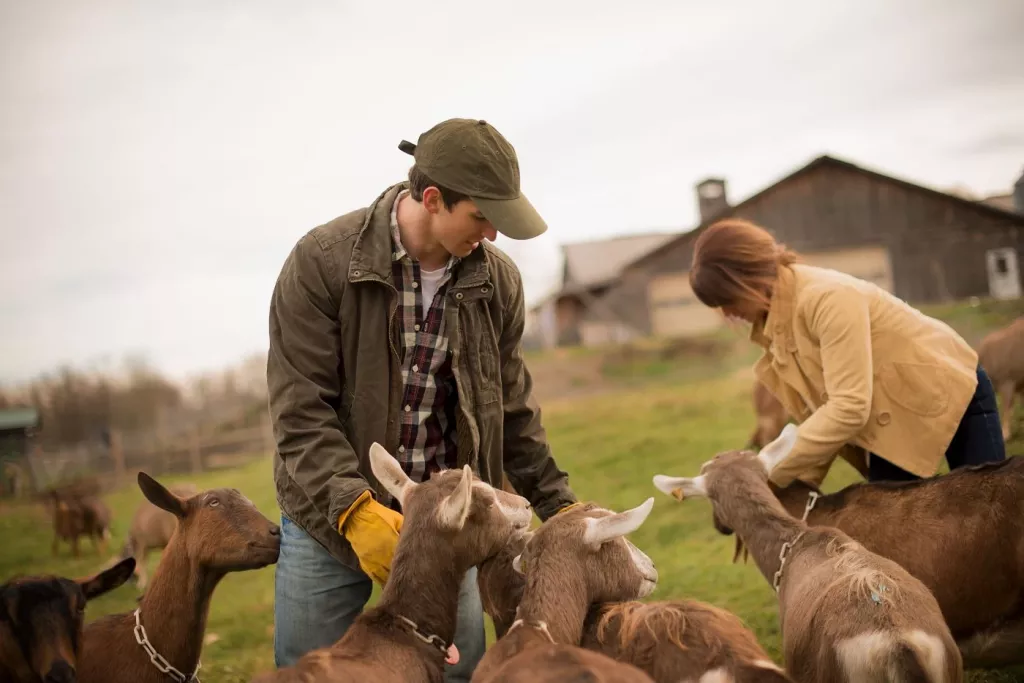Smallholding Permitted Development Rights Explained
During the pandemic, demand for rural properties increased significantly as individuals sought to leave the city. Due to the restrictive zoning rules on new buildings in the open countryside, barn-type development is frequently the only means to achieve new rural dwellings. How did the government get to solve this problem? Let's find out.
Permitted development rights for farms are pre-approved planning rights for certain types of development on agricultural property. You have the right to build, extend, or alter a building, as well as carry out excavations and engineering works needed for agricultural purposes, provided your farm is 5 hectares or more.
For farmers and other agricultural businesses wishing to update existing assets and access alternative sources of income, recent modifications to agricultural permitted development rights (PDRs) are opening up significant options. Let's take a look.
Summary
- Under PDR, agricultural sheds may now be up to 1,000 square meters in size instead of just 465.
- Now, PDR permits shed extensions to be up to 20% of the building's existing cubic volume.
- Buildings used for agriculture or forestry that were constructed prior to November 4th, 2019, may be converted to residential or commercial use under PDR: residential - up to 5 residences (houses or flats), and business space of up to 500 square meters.
- Projects to restore peatlands will be able to move forward without needing to request planning permission.
- To help with connectivity issues, PDR for connectivity infrastructure has been implemented.

On this page:
What Are Permitted Development Rights in Smallholdings?
According to GOV.UK, if your farm is 5 hectares or more, you have the right to build, extend, or modify a building, as well as perform excavations and engineering operations necessary for agricultural purposes. However, you may still need approval for some development-related details.
Permitted Development Rights (PDRs) for farms are pre-approved planning permissions for particular types of development on agricultural property, which can reduce project costs and facilitate a speedier, smoother, and more efficient project.
On specified sites, they enable landowners to construct, expand, develop, convert, excavate, or do engineering work without having to obtain full planning permission; some of them have been created especially for agricultural structures.
Changes to permitted development rights were announced in March 2018, giving rural communities more possibilities for turning agricultural structures into residences.
There will be an increase from three to five new homes that can be built on a farm using the current agricultural structures. This will permit a maximum of three larger dwellings with 465 square meters each, up to five smaller dwellings, each no bigger than 100 square meters, and combining the two aforementioned options—no more than five dwellings (no more than 3 being larger homes).
By raising the maximum size for new agricultural structures from 465 to 1,000 square meters, the new regulations are meant to make it easier for farmers to incorporate the newest advancements in farming techniques.
The Town and Country Planning (General Permitted Development) Order 2015 outlines these rights. The General Allowed Development Order grants agriculture a significant amount of permitted development or situations in which you do not require planning permission. Holdings larger than 5 hectares (12.35 acres) and smaller than 5 hectares are subject to different regulations.
Agricultural structures may be permitted development on larger holdings under certain conditions, but even if they are, they will be subject to the Prior Notification procedure, which gives the Local Planning Authority 28 days to say they wish to influence the siting, design, and external appearance.
Although not having planning permission for a use or development makes it possible for enforcement, it is not unlawful. If the development has been in place for a sufficient amount of time, a Certificate of Lawful Existing Use or Development may be obtained as a defense against enforcement. Knowing your options and using techniques might be crucial when starting or expanding a farm.

What Qualifies as Permitted Development?
As part of "permitted development," you might be able to make some changes or improvements without getting planning permission.
Temporary uses of land, agricultural structures under a specific size limit, forestry structures, caravan sites, and related buildings are some examples of permitted development.
To ensure that your development won't require planning permission, check with your local planning authority (or local area planning office in Northern Ireland) before using permitted development rights.
Simply put, development:
- must be on land used for farming in order to conduct a trade or business;
- must be substantially necessary for agricultural purposes;
- must not create, modify, or extend a dwelling;
- must be at least 25 meters away from any metaled sections of a trunk or classified roads;
- must not be taller than 12 meters;
- must not have a ground area larger than 465 square meters.
To carry out development on a farm holding, you do not always need planning permission. A farm holding may consider certain development to be permitted development. This includes any projects for the construction, extension, or modification of a structure that are reasonably required for agricultural purposes.
The development must, however, adhere to a number of standards outlined in the relevant legislation. Providing you satisfy the prerequisites, planning permission is not needed.
What Are The Types of Agricultural PDRs?
For many agricultural structures and activities, permitted development rights are granted. Under Class A of the GPDO, agricultural units with at least 5 hectares are eligible for the rights to construct, expand, or alter such buildings, as well as for excavations and engineering works.
Smaller units of not less than 0.4 hectares are eligible for more restricted rights, such as additions and alterations that do not add more than 10% to the original building's content, under Class B of the GPDO.
A number of updated and new general permitted development rights went into effect in April 2015. They permit the conversion of agricultural land and structures into any one of the following uses:
-
A flexible use (Class R) is any use that can be accommodated under a variety of conditions. Examples include retail stores, offices, hotels, restaurants, cafes, storage facilities, and professional and financial services.
-
State-funded educational institutions or licensed daycare facilities are examples of educational uses (Class S).
-
The conversion of a maximum floor area of 450 square meters into three houses is a residential use (Class Q). This is contingent upon the proposal's favorable effects on transportation and roadways, siting, noise, contamination, flood risk, and design.
-
A new class of permitted development rights (Class PA) also went into effect on October 1, 2017, enabling the conversion of a building from a light industrial use to a residential use.
As a result, some farmers are utilizing their permitted development rights to build extra living spaces on their properties, such as barn conversions. However, before any construction work can begin, a permitted development application must be accepted, and any proposed development must still follow the necessary planning process.
Farmers are considering measures for income diversification and potential new sources of revenue. A good opportunity to realize the value of some of their assets and produce extra income is to use part of their land and buildings as flexible commercial property. This is crucial given the abolishment of farm payments.

How to Apply For and Use Permitted Development Rights
Before investing any money in building work, our professional advice is to submit the details of the proposed development to the local authority rather than assuming that you have the right to build or develop on your land because understanding the procedures regarding Permitted Development Rights can be difficult. You should provide as much information as you can in your application, including the project's agricultural justification.
Farmers will reduce the workload of local planning authorities while also saving time and money. Those that are going through the entire planning process will benefit from this, and it should shorten the time it takes for the local planning authority to review their application. It's crucial to keep in mind that this does not entitle you to begin construction without informing anyone.
No matter who owns the land or property in question, anyone may submit an application. You must inform the owner or the people who jointly own the property with you if you are not the owner or merely have a portion of the ownership. You must notify any leaseholder whose lease has seven years or more left to run, as well as any agricultural tenants, when you rent out land or structures.
Renters must alert landlords. You don't have to create the application yourself. You can designate an agent to submit the application on your behalf, such as a planning consultant, an architect, a surveyor, or a builder. Tenants should obtain objective professional advice from experts.
It is a good idea to discuss your ideas with your local planning authority early on in the planning process as part of your preparation. The authority can send you copies of the planning application form and any relevant guidance notes, provide general advice, let you know when your application will be handled, and explain the conditions for publicizing your application, among other things.
If prior approval is required, the local planning authority must react to your permitted development application within 28 days of receiving it. If so, local planners have eight more weeks to make a decision.



